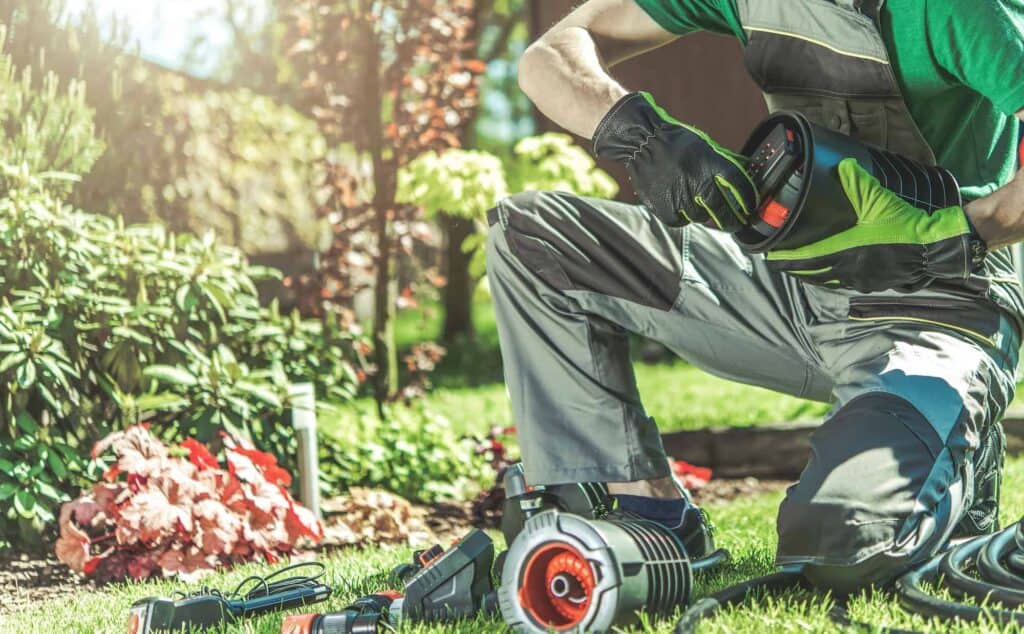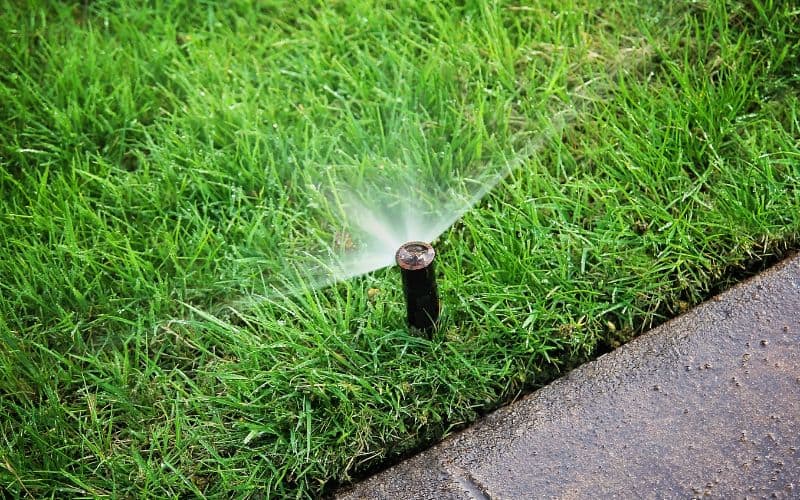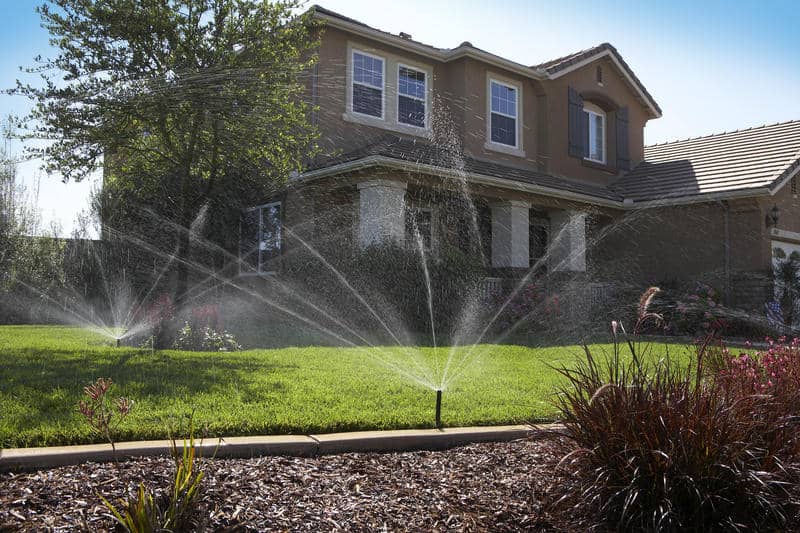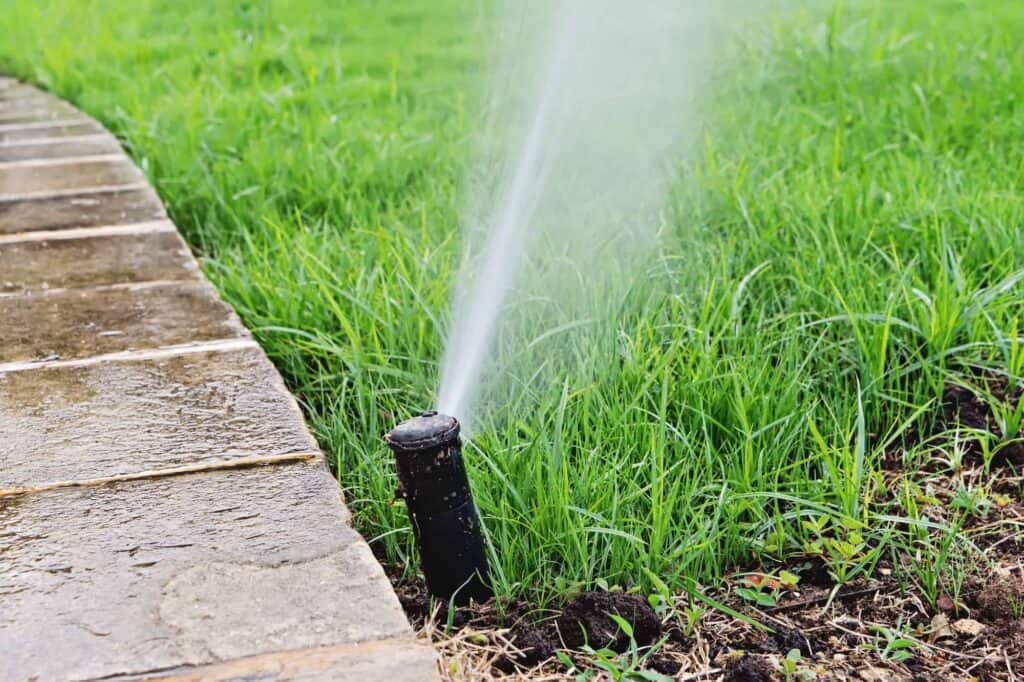To ensure you have the best possible lawn this season, you need to make sure your grass, flowers, shrubbery, and trees receive adequate amounts of water. Unless you have time to stand in your yard with a garden hose for hours at a time, installing an automatic sprinkler system is the best option. There are several types of watering methods you can consider. Here’s a handy guide to choosing the right sprinkler for your yard:
Drip Irrigation Systems
Drip Irrigation systems provide plants with smaller amounts of water distributed over an extended period. It allows water to penetrate deeper into the soil to a plant’s roots and is an efficient system for shrubs and perennials. Directing water to specific plants can significantly reduce waste.
Soaker Hoses
Soaker hoses allow water to seep slowly into the soil. Tiny holes in the tube allow water to trickle out as needed. You can place these hoses on top of the ground, slightly bury them, or conceal them by mulch. To avoid water leaking into areas that don’t need it, you can attach regular hose sections in between the soaker hose sections.
Above-Ground Sprinkler Systems
Most people commonly use them to irrigate large areas such as lawns. A hose connects these systems, and the sprinkler can be stationary, oscillating, traveling, or rotating to water the area. A major downfall of above-ground sprinkler systems is the significant potential for forgetting that the water is on. Just one afternoon of forgotten sprinkling can result in a massive water bill and ruined areas where the water has flooded the yard. A second downfall is the snaking of the garden hoses in between the above-ground sprinklers. These are not only unsightly but when unused time on your lawn, they can kill the grass beneath them, leaving a brown snake pattern on your lawn.
In-Ground Sprinkler Systems
These consist of a network of pipes and channels buried underground, which deliver water to specific areas of your lawn and garden. A control valve connects each zone, allowing for watering at different times and durations, designating these areas as zones. The main control panel attaches all of the control valves. This kind of sprinkler system has sprinkler heads that pop up to water surrounding areas. In-ground sprinkler systems may be the right sprinkler system for you if you like the idea of being able to put your sprinkler system on a timer to avoid water waste. Another significant benefit to an in-ground sprinkler system is that the system does not impede ordinary lawn care, such as mowing and fertilizing. Finally, in-ground sprinkler systems are virtually invisible, except for the sprinkler heads when they are at work.
Customized System
Your lawn will look its best when it’s watered regularly, with the right amount of water. The biggest advantage to choosing a sprinkler system for watering your lawn is that you’ll have the look of lush, healthy grass. Sprinklers keep your ground hydrated throughout the year. Automated sprinkler systems can make your watering schedule more efficient and effective.
By setting your sprinklers to water your lawn at the right times of day, and for the right amount of time, you can be sure that your lawn will be watered just enough without being wasteful. Keep in mind that watering too little or too much can lead to dry grass, rotting grass, or disease.
Sprinkler Maintenance Tips for Spring
If you already have a sprinkler system, it’s time to start thinking about your sprinkler maintenance for spring. Performing necessary sprinkler maintenance now will help ensure that your system will operate efficiently and keep your lawn watered all spring and summer. Follow these maintenance tips to get your sprinkler up and running for the season.

Closing Open Valves and Drains Left Open from the Fall
First, you’ll want to make sure that your sprinkler system’s control box is turned off. This will prevent the system from turning on until you’re ready. During your fall shutdown, the drains and valves were opened to allow water to drain. Now they all need to be closed again. This includes the valves on the backflow prevention device, the electronic valves in the box, and the drain valves that are located in the in-ground box near the end of the sprinkler manifolds.
Make sure that the drain, also known as the blow-out point, is shut tight. The drain can be either a cap or plug and can be found near the bonnet which looks like a bell. You’ll need to know where the main water shutoff is for your system. This usually can be found in your utility room, basement, or crawl space. Close the drain valve near the irrigation shut off.
Turning the Water Back On
With all the valves and drains closed, you can now turn on the main irrigation supply line. You will want to slowly turn it on while listening to see if the sound of water running stops within a few seconds. If it continues to run, you probably missed closing one of the valves. Turn off the water supply and go look outside for signs of water spraying. Once you locate the valve, close it and then proceed to turn the water back on.
With the water on and no water leaks anywhere, you can now open the ball valve near the system’s backflow preventer to pressurize the device. Open the other ball valve slowly, leaving it at a 45-degree angle. This will allow the mainline to charge up and will take several minutes until you hear the water stop running. While this is happening, take a look around at your system to make sure there aren’t any leaks.

Starting Up the System
Now that your system is charged, it’s time to run each zone and check for signs of leaks. Over the winter it’s possible that sprinkler heads or pipes became damaged and now require sprinkler maintenance. In some cases, you may only need to clean out clogged nozzles and heads to get them to work correctly. If this doesn’t fix the problem, replacing a sprinkler head is an easy part of sprinkler maintenance.
Make sure that your sprinkler heads are not wasting water by spraying your sidewalks or other paved areas. Make adjustments necessary so your spray pattern goes correctly toward your lawn or gardens. Now that your system is ready to go, make sure that your control box is programmed with the times and days that you want your lawn to be watered.


